
2,4-Diaminoanisole sulfate NEW
| Price | $5 | $0.1 |
| Package | 1KG | 1000KG |
| Min. Order: | 1KG |
| Supply Ability: | g-kg-tons, free sample is available |
| Update Time: | 2024-03-27 |
Product Details
| Product Name: 2,4-Diaminoanisole sulfate | CAS No.: 39156-41-7 |
| Min. Order: 1KG | Purity: 98% |
| Supply Ability: g-kg-tons, free sample is available | Release date: 2024/03/27 |
| Lead time: In stock, ready for shipment | Packaging: bag/bottle/drum/IBC |
| Delivery: By express, by air, by sea | Origin: Manufacturer, advantage product |
| COA, MSDS: Available, contact us for details | Name: Tina |
1. Materials information
| Name | 2,4-Diaminoanisole sulfate |
|---|---|
| Synonym | More Synonyms |
| Boiling Point | 149 - 150 (5 torr) |
|---|---|
| Melting Point | 189-192ºC |
| Molecular Formula | C7H12N2O5S |
| Molecular Weight | 236.24600 |
| Flash Point | 164.6ºC |
| Exact Mass | 236.04700 |
| PSA | 144.25000 |
| LogP | 2.45000 |
| Water Solubility | Soluble. 1-5 g/100 mL at 18.5 ºC |
Name:4-Methoxy-M-Phenylenediamine Sulfate Hydrate 98% Material Safety Data SheetSynonym:2,4-Diaminoanisole; 1,3-Diamino-4-Methoxybenzene Sulphate; P-Methoxy-M-Phenylenediamine SulphateCAS:39156-41-7Section 1 - Chemical Product MSDS Name:4-Methoxy-M-Phenylenediamine Sulfate Hydrate 98% Material Safety Data Sheet Synonym:2,4-Diaminoanisole; 1,3-Diamino-4-Methoxybenzene Sulphate; P-Methoxy-M-Phenylenediamine Sulphate Section 2 - COMPOSITION, INFORMATION ON INGREDIENTS CAS#Chemical NamecontentEINECS#39156-41-74-Methoxy-M-Phenylenediamine Sulfate98254-323-9Hazard Symbols: T Risk Phrases: 23/24 33 40 Section 3 - HAZARDS IDENTIFICATION EMERGENCY OVERVIEW Toxic by inhalation and in contact with skin. Danger of cumulative effects. Limited evidence of a carcinogenic effect.Cancer suspect agent.The toxicological properties of this material have not been fully investigated. Potential Health Effects Eye: May cause eye irritation. Skin: May cause skin irritation. Ingestion: May cause irritation of the digestive tract. May cause cardiac disturbances. May cause methemoglobinemia, cyanosis (bluish discoloration of skin due to deficient oxygenation of the blood), convulsions, and death. The toxicological properties of this substance have not been fully investigated. May cause central nervous system depression. Inhalation: May cause respiratory tract irritation. May cause methemoglobinemia, cyanosis (bluish discoloration of skin due to deficient oxygenation of the blood), convulsions, tachycardia, dyspnea (labored breathing), and death. The toxicological properties of this substance have not been fully investigated. May cause cardiac abnormalities. Inhalation at high concentrations may cause CNS depression and asphixiation. Chronic: May cause methemoglobinemia, which is characterized by chocolate-brown colored blood, headache, weakness, dizziness, breath shortness, cyanosis (bluish skin due to deficient oxygenation of blood), rapid heart rate, unconsciousness and possible death. Section 4 - FIRST AID MEASURES Eyes: Flush eyes with plenty of water for at least 15 minutes, occasionally lifting the upper and lower eyelids. Get medical aid. Skin: Get medical aid. Flush skin with plenty of water for at least 15 minutes while removing contaminated clothing and shoes. Wash clothing before reuse. Ingestion: Never give anything by mouth to an unconscious person. Get medical aid. Do NOT induce vomiting. If conscious and alert, rinse mouth and drink 2-4 cupfuls of milk or water. Inhalation: Remove from exposure and move to fresh air immediately. If not breathing, give artificial respiration. If breathing is difficult, give oxygen. Get medical aid. Notes to Physician: For methemoglobinemia, administer oxygen alone or with Methylene Blue depending on the methemoglobin concentration in the blood. Antidote: Methylene blue, alone or in combination with oxygen is indicated as a treatment in nitrite induced methemoglobinemia. Section 5 - FIRE FIGHTING MEASURES General Information: As in any fire, wear a self-contained breathing apparatus in pressure-demand, MSHA/NIOSH (approved or equivalent), and full protective gear. During a fire, irritating and highly toxic gases may be generated by thermal decomposition or combustion. Runoff from fire control or dilution water may cause pollution. Extinguishing Media: Use agent most appropriate to extinguish fire. Section 6 - ACCIDENTAL RELEASE MEASURES General Information: Use proper personal protective equipment as indicated in Section 8. Spills/Leaks: Vacuum or sweep up material and place into a suitable disposal container. Clean up spills immediately, observing precautions in the Protective Equipment section. Avoid generating dusty conditions. Provide ventilation. Section 7 - HANDLING and STORAGE Handling: Wash thoroughly after handling. Use with adequate ventilation. Minimize dust generation and accumulation. Avoid contact with eyes, skin, and clothing. Keep container tightly closed. Avoid ingestion and inhalation. Storage: Store in a tightly closed container. Store in a cool, dry, well-ventilated area away from incompatible substances. Section 8 - EXPOSURE CONTROLS, PERSONAL PROTECTION Engineering Controls: Facilities storing or utilizing this material should be equipped with an eyewash facility and a safety shower. Use adequate ventilation to keep airborne concentrations low. Exposure Limits CAS# 39156-41-7: Personal Protective Equipment Eyes: Wear appropriate protective eyeglasses or chemical safety goggles as described by OSHA's eye and face protection regulations in 29 CFR 1910.133 or European Standard EN166. Skin: Wear appropriate protective gloves to prevent skin exposure. Clothing: Wear appropriate protective clothing to prevent skin exposure. Respirators: A respiratory protection program that meets OSHA's 29 CFR 1910.134 and ANSI Z88.2 requirements or European Standard EN 149 must be followed whenever workplace conditions warrant respirator use. Section 9 - PHYSICAL AND CHEMICAL PROPERTIES Physical State: Powder Color: brown-gray Odor: Not available. pH: Not available. Vapor Pressure: Not available. Viscosity: Not available. Boiling Point: Not available. Freezing/Melting Point: 189.00 - 192.00 deg C Autoignition Temperature: Not available. Flash Point: Not available. Explosion Limits, lower: Not available. Explosion Limits, upper: Not available. Decomposition Temperature: Solubility in water: Specific Gravity/Density: Molecular Formula: C7H10N2O.H2SO4.xH2O Molecular Weight: 236.26 Section 10 - STABILITY AND REACTIVITY Chemical Stability: Stable at room temperature in closed containers under normal storage and handling conditions. Conditions to Avoid: Incompatible materials, dust generation, excess heat, strong oxidants. Incompatibilities with Other Materials: Oxidizing agents. Hazardous Decomposition Products: Nitrogen oxides, carbon monoxide, irritating and toxic fumes and gases, carbon dioxide, hydrogen sulfide, sulfur oxides (SOx), including sulfur oxide and sulfur dioxide. Hazardous Polymerization: Has not been reported Section 11 - TOXICOLOGICAL INFORMATION RTECS#: CAS# 39156-41-7: ST2705000 LD50/LC50: CAS# 39156-41-7: Oral, rat: LD50 = >4 gm/kg. Carcinogenicity: 4-Methoxy-M-Phenylenediamine Sulfate Hydrate - California: carcinogen, initial date 1/1/88 NTP: Suspect carcinogen Other: See actual entry in RTECS for complete information. Section 12 - ECOLOGICAL INFORMATION Section 13 - DISPOSAL CONSIDERATIONS Dispose of in a manner consistent with federal, state, and local regulations. Section 14 - TRANSPORT INFORMATION IATA Shipping Name: DYE, SOLID, TOXIC, N.O.S.* Hazard Class: 6.1 UN Number: 3143 Packing Group: II IMO Shipping Name: DYE, SOLID, TOXIC, N.O.S. Hazard Class: 6.1 UN Number: 3143 Packing Group: II RID/ADR Shipping Name: DYE, SOLID, TOXIC, N.O.S. Hazard Class: 6.1 UN Number: 3143 Packing group: II Section 15 - REGULATORY INFORMATION European/International Regulations European Labeling in Accordance with EC Directives Hazard Symbols: T Risk Phrases: R 23/24 Toxic by inhalation and in contact with skin. R 33 Danger of cumulative effects. R 40 Limited evidence of a carcinogenic effect. Safety Phrases: S 24/25 Avoid contact with skin and eyes. WGK (Water Danger/Protection) CAS# 39156-41-7: No information available. Canada CAS# 39156-41-7 is listed on Canada's DSL List. CAS# 39156-41-7 is listed on Canada's Ingredient Disclosure List. US FEDERAL TSCA CAS# 39156-41-7 is listed on the TSCA inventory. SECTION 16 - ADDITIONAL INFORMATION N/A |
CHEMICAL IDENTIFICATION
HEALTH HAZARD DATAACUTE TOXICITY DATA
MUTATION DATA
|
| Hazard Codes | T:Toxic; |
|---|---|
| Risk Phrases | R23/24;R33;R40 |
| Safety Phrases | S24/25 |
| Packaging Group | I; II; III |
| Hazard Class | 6.1 |
| HS Code | 2922299090 |
| HS Code | 2922299090 |
|---|---|
| Summary | 2922299090. other amino-naphthols and other amino-phenols, other than those containing more than one kind of oxygen function, their ethers and esters; salts thereof. VAT:17.0%. Tax rebate rate:13.0%. . MFN tariff:6.5%. General tariff:30.0% |
2. Packaging of materials
For powders: normal is 25kgs/Drum or bag, or larger/smaller package as request.
For liquids: normal 25kgs/drum, 180-300kgs/bucket, or IBC, determined by the nature of the product.
Or smaller package 1kg/bottle, 10kgs/bottle as request.
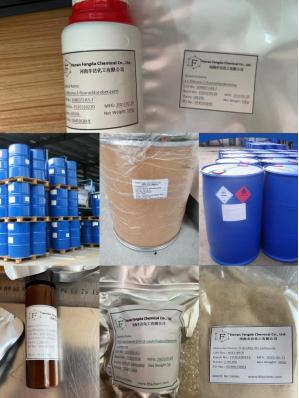
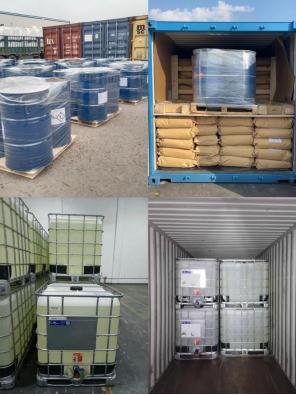
3. Shipping & Delivery
By Express
Provide door to door service
Suitable for goods under 50kg
Delivery: 3-7 days
Cost: low cost

By Air
Provide airport to airport service
Suitable for goods over 50kg
Delivery: 3-14 days
Cost: high cost
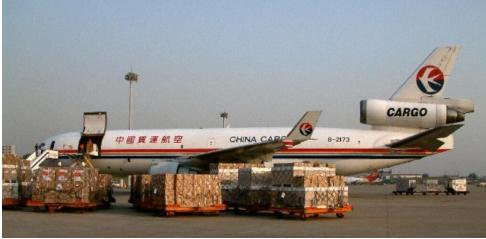
By Sea
Provide seaport to seaport service
Suitable for goods over 100kg
Delivery: 2-45 days
Cost: low cost

4. Contact information
For more details, pls contact us freely.
Email address: Tina@fdachem.com
Mob: 86 15225627621
WhatsApp/Skype/Wechat/LINE: 86 15225627621
Company Profile Introduction
You may like
Recommended supplier
| Product name | Price | Suppliers | Update time | |
|---|---|---|---|---|
| $0.00/1KG |
VIP4Y
|
WUHAN FORTUNA CHEMICAL CO., LTD
|
2023-02-23 | |
| $2.00/1kg |
VIP6Y
|
Career Henan Chemical Co
|
2018-12-20 |
- Since: 2023-02-10
- Address: Room 01, 2288 E05, Building 14, East Henan University, Science and Technology Park, 279 Xisanhuan Ro


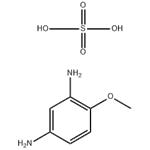


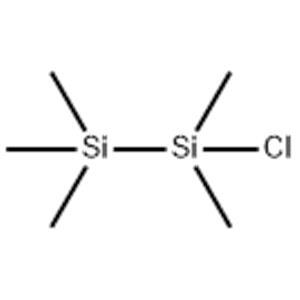
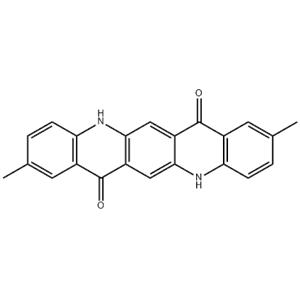

 China
China